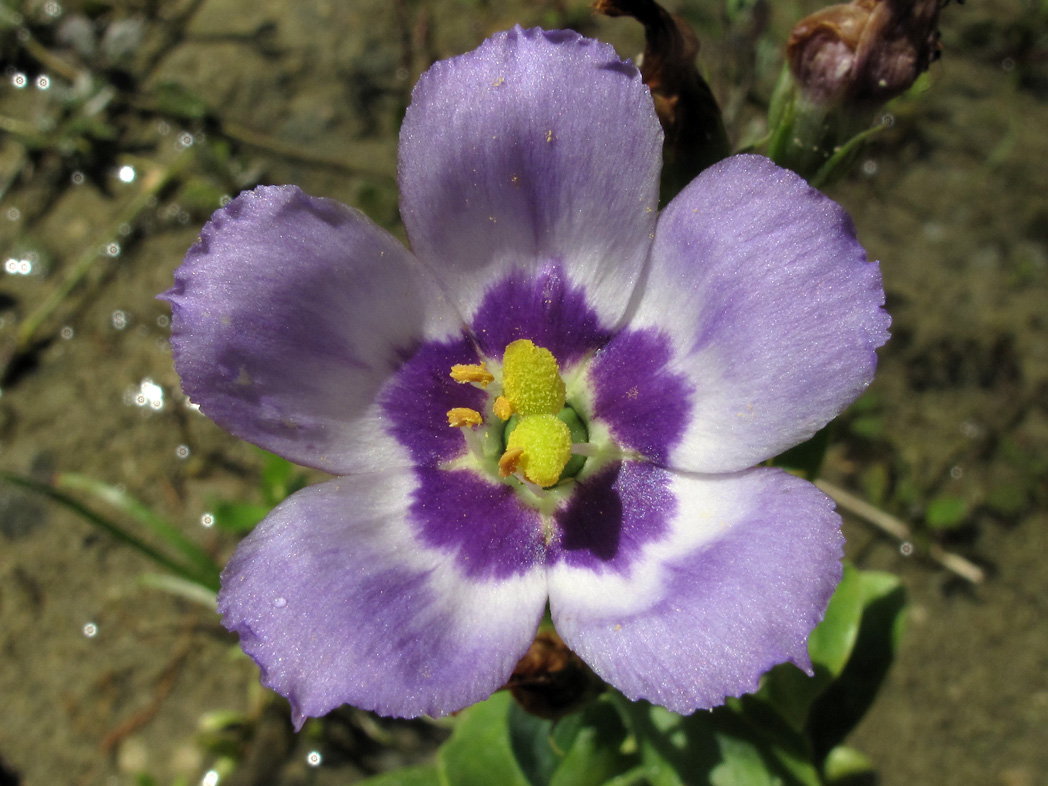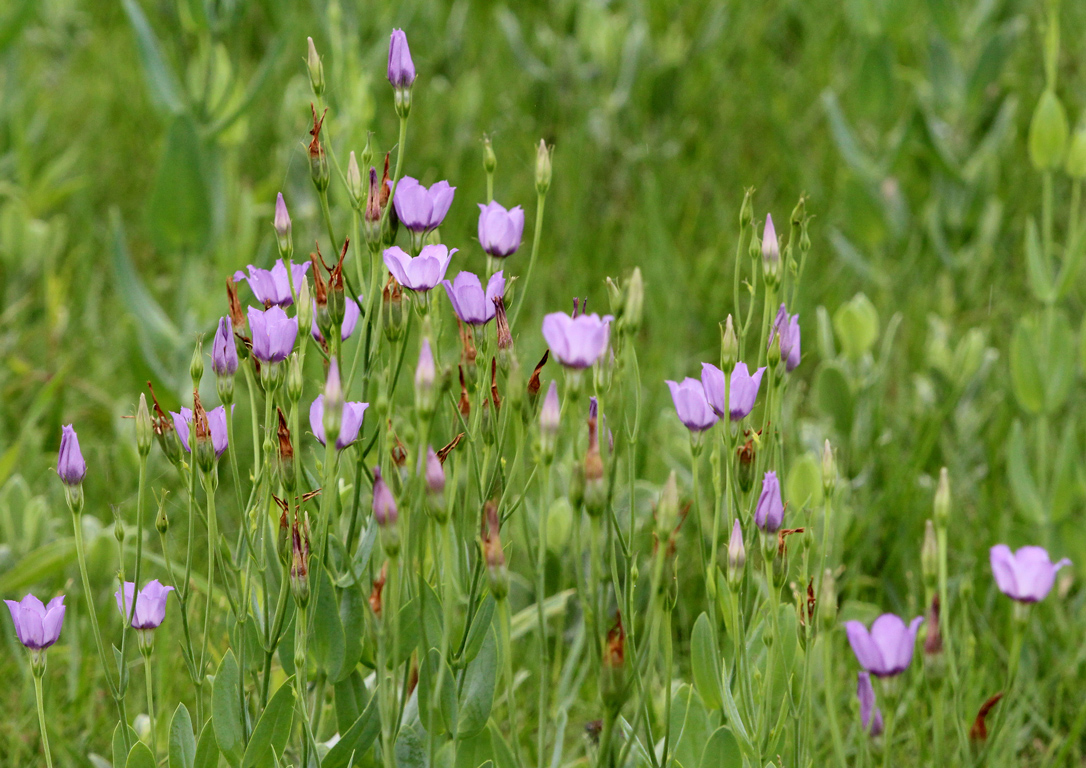Marsh gentian
Pictured above: Marsh gentian (Eustoma exaltatum) by Mary Keim. Click on terms for botanical definitions. View post as a PDF.
Marsh gentian (Eustoma exaltatum) (also known as Seaside prairie-gentian or Catchfly prairie-gentian) is an annual wildflower with showy purple to lavender (or sometimes white) flowers. They are 5-lobed, typically cup-shaped, have dark centers and are born on long, erect stalks. Leaves are clasping, grayish-green and elliptical, and are oppositely arranged.

Marsh gentian can produce flowers throughout the year and occurs naturally in salt marshes, dunes, and coastal flats.
The genus name Eustoma comes from the Greek eu, or “beautiful,” and stoma, or “mouth.”
Family: Gentianaceae (Gentian family)
Native range: Escambia county; coastal counties from Dixie south to Monroe and from Brevard south into the Keys
Hardiness: 8A–11
Soil: Sandy and calcareous soils
Exposure: Full sun to minimal shade
Growth habit: 1–3’ tall
Garden tips: Marsh gentian is easily propagated by seed. It is salt-tolerant and does well in coastal areas.
Plants are often available at nurseries that specialize in native plants. Visit PlantRealFlorida.org to find a native nursery on your area.

